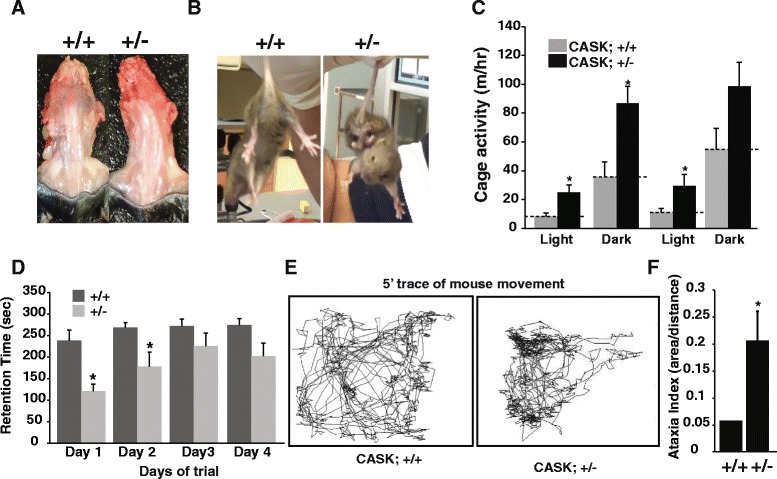Fig. 4.

CASK (+/-) mice display musculoskeletal and locomotion defects. a Dissected torso from three month old CASK (+/+) and CASK (+/-) mice; CASK (+/-) mice display scoliosis. b CASK (+/-) mice display hind-limb clasping phenotype. c Activity of CASK (+/+) and CASK (+/-) mice measured in metabolic cages. Data plotted as mean ± SEM; (* indicates p < 0.05; n = 5) (d) CASK (+/-) mice were trained on a fixed speed rotorod and retention time noted. On each day, fresh sets of sex-and-age matched CASK (+/+) littermate mice were used as controls. Data are plotted as mean ± SEM; (* indicates p < 0.05; n = 5). e Representative 5-min trace of positions of CASK (+/+) and CASK (+/-) mice in home cage detected by a force plate. f Quantitation of locomotion observed on a force plate (area covered in 5 min/net distance traveled). Data are plotted as mean ± SEM; (* indicates p < 0.05; n = 5). All locomotion experiments were performed on mice between 25-30 days of age
